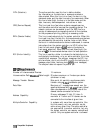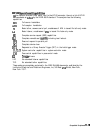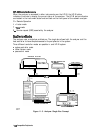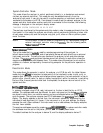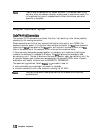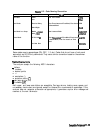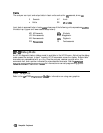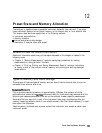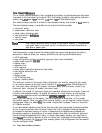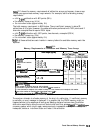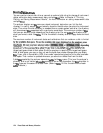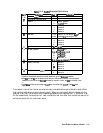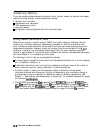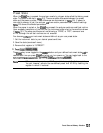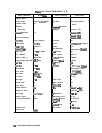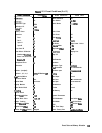
Non-Volatile
Memory
This is CMOS read/write memory that is protected by a battery to provide storage of data when
line power to the instrument is turned off. With this battery protection, data can be retained in
memory for
~250
days at
70’
C and for
~~10
years at
25”
C (characteristically).
Non-volatile memory consists of a block of user-allocated memory and a block of
fixed
memory.
The user-allocated memory is available for you to save the following data:
n
instrument states
n
measurement calibration data
n
power meter calibration data
n
user calibration kit
definitions
n
memory traces
n
user preset
Note
Even though calibration data is stored in non-volatile memory, if the associated
instrument state is not saved, you will not be able to retrieve the calibration
data after a power cycle.
The fixed memory is used to store the following data (you cannot change where this data is
stored and it does not affect your memory availability for storing user-allocated data):
n
HP-IB addresses
n
copy configuration (printer and plotter type, port, baud rate, handshake)
n
power meter type (HP 436/438)
n
display colors
n
sequence titles
n
sixth sequence
n
power sensor calibration factors and loss tables
n
user-deflned calibration kits
n
system ZO
n
factory preset
n
HP-IB configuration
n
display intensity default
The maximum number of instrument states, calibrations, and memory traces that can reside
in non-volatile memory at any one time is limited to 31
instrtmient
states, 128 calibrations (4
per instrument state, including the present instrument state), and 64 memory traces (4 per
instrument state, including the present instrument state).
In addition, the number of instrument states and associated calibrations and memory traces are
limited by the available memory. lb display the amount of unused memory on the analyzer,
,.
,.
,....,.,.,.;
_;
_
.,
press
(jj).
(Be sure you have selected
~~~~.~~~~
as your disk type.) In the
:t<
_........
:<~.:.:..:.::.-
~:..:::::
:~...~.~.~.~.~.~.~.~.~.~.~
upper right-hand portion of the display, the value displayed as Bytes free : is the unused
non-volatile memory. When you save to the internal memory, you will see the number of bytes
free decrease. When you delete
ties,
the number of bytes free increases. There is a maximum
of 2 MBytes available.
If you have deleted registers since the last time the instrument was preset, the bytes available
for you to use may be less than the actual “bytes free” that is displayed. Deleting registers
to increase the available memory will work in cases where the registers being deleted and
the registers needing to be added are of the same standard size (such as instrument states not
having calibrations associated with them). In certain other cases, however, you may have to
press
m
after deleting registers so that the “bytes free” value equals the available memory
value. During a preset, the
analyzer
runs a memory packer that de-fragments the free memory
into one contiguous block.
12-2 Preeet State and Memory Allocation



